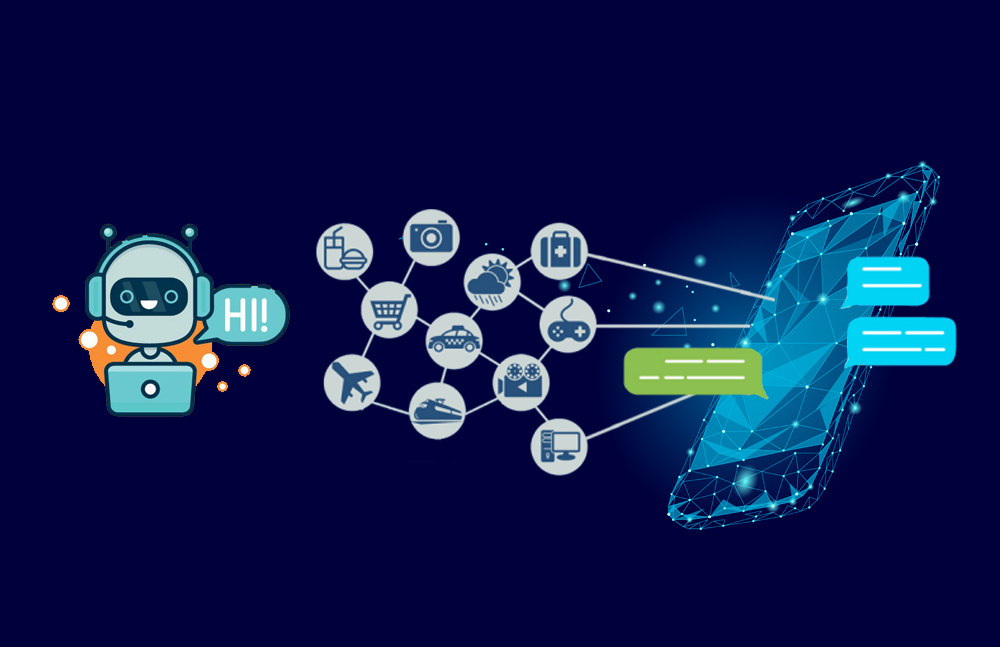Chatbots are commonly associated with new technology. However, in point of fact, they existed before the hype. Already in the year 1966, a chatbot called Eliza was developed. Since then, technological advancements are remarkable. By now, some are capable to mimic human behavior, including communication and learning – a recipient might not even realize that his counterpart is non-human. And keep in mind that today they are spread ubiquitously. According to Gartner, by 2020 they might take over 85% of all interactions with the customers.
.
.
Now, to get more into detail – how do chatbots work?
According to Techopedia, a chatbot is “an artificial intelligence (AI) program that simulates interactive human conversation by using key pre-calculated user phrases and auditory or text-based signals.” Hence, one might consider it as an app, but that’s not the entire truth.
.
Chatbots are very similar to live chats. To the point where the user is barely able to spot a difference. There is a real person, who stays behind a live chat and who is there for you to resolve your issue. It might feel more natural to receive support from a person, however, human assistance is not available 24/7.
.

In a simplified explanation, a chatbot is a digital robot that is using algorithms that allow it to communicate and to provide all the necessary answers to people. Thus, by the enhancement of AI, chatbots are able to understand complex conversations without the need for 24/7 customer service implementation. Plus, it can be easily used as a tool on every assumed website.
.
Due to the different resolutions, there are two different kinds of chatbots:
- Transactional chatbots
- Conversational chatbots
.
.
Spot the difference: Conversational vs. Transactional chatbots
Let us start with Conversational chatbots that use available data (such as FAQs and corresponding answers) for the improvement of customer service and for providing visitors with relevant information. In this matter, Al chatbot developers train the machine’s algorithm to accomplish specific goals and tasks. For instance, it should be able to extract specific information like data that is given on the website, connecting questions and answers and providing them to the visitors. Additionally, there should be systematic feedback on how the chatbot performs tasks and follows the algorithm.
.
On the contrary, the aim of a Transactional chatbot is to provide customers with a unique service. In such a situation, the chatbot is programmed to collect and work with particular data. In the typical case of a restaurant recommendation service, it should be able to localize the client to suggest the best options in that particular area, taking in account the frequency of them eating out as well as their food tastes. In Al chatbot’s architecture, the ability to retrieve data and link it to several platforms is an integral component for its success.
.
What about human speech perceived by a chatbot?
A chatbot is able to comprehend and reply as a human being, this feature is known as NLP (Natural Language Processing). NLP is a combination of two techniques – NLU (Natural Language Understanding) and NLG (Natural Language Generation). NLU allows chatbots to comprehend human language regardless of the slang, mispronunciation, and other language inaccuracies. NLG on the other hand is responsible for the ability to generate answers. Despite the advances of this technology, chatbots are still not perfect at processing slight variations in meaning as well as the tone of written speech. However, it will be fair to mention that they improve every day. How to create an amazing AI Chatbot in simple steps. Regardless of the fact that chatbots can only perform a limited set of functions in comparison to different apps, AI chatbot development is a complex process. However, it may be tracked through the following steps.
.
Step 1. Make sure to understand the purpose of your chatbot
Although it sounds too obvious, when adding a chatbot to your website, it’s critical to understand the goals you are targeting. Clearly, such motivation as “others have it and so should we” is not good at all. So, first of all, make sure that you are not only willing to follow technological trends, but also have a decent purpose for a chatbot integration. It is important to choose wisely because the range of chatbot applications is broad. For example, the ones that you are already familiar with like Siri can actually “talk” to customers like a real person. This is possible since AI chatbot is able to self-learn and improve the communicating skills, apply CRM systems and even perform direct sales.
.
Step 2. Choose a chatbot type wisely
Getting a clear understanding of what functions the chatbot should perform in your business will help you to determinate the right type for you. The choice of whether a transactional or conversational chatbot is preferable is also important as the approaches are different. After making your final decision about chatbot type, analyze the resources that will be required as well as find the appropriate technologies. Just a quick example: if you expect your chatbot to be integrated with your CRM system, you should also allocate more time and resources to implement that. At this step, the decision about the right communication channel (may include apps, websites, social media depending on your target customers) should be made. Even though the process is long, the results may be rewarding.
.
Step 3. Build your chatbot
Programming is the most complex part because of the strictly IT architectural rules.
The main steps for AI chatbot development are the following:
1) Data collection and preparation;
2) A thorough analysis of the data in regard to intents as well as for building answer systems;
3) User interface design depending on the chosen channel;
4) Analysis of entities in questions and replies;
5) Chatbot architecture programming;
6) Chatbot coding.
.
Step 4. Test your chatbot
After programming the chatbot it needs to be tested. This process is no way easier than the previous one, as far as any mistake in programming should be revealed. To begin with, the chatbot’s ability to hold the conversation must be tested. Before the experiment begins it is mandatory to create a list of conversation patterns, which include both “happy” and “unhappy” scenarios. First, track the most frequent ones and then make sure to investigate and improve whatever goes wrong. Only basic (primitive) chatbots could be tested manually. For more complex chatbots the automated testing is a must. Such testing may be carried out by open-source test automation tools like TestMyBot.
.
Step 5. Deploy your chatbot
The next step, after the chatbot is designed and ready to use, is to launch it. Do you expect a quick word of mouth effect, or are you ready to wait until your chatbot is polished and fine-tuned? Regardless of what you’ve just chosen, you have to plan a strategy of launching your chatbot, including important preparations among PR and marketing collateral in case you are targeting the media headlines.
.
The decision about the release date is also challenging. Even after numerous tests and check-ups, there cannot be a full guarantee that it will function smoothly by the release day. Hence, you should be prepared to take action in case any issues occur shortly after launching your chatbot.
.
According to customer survey results, people show a rather positive attitude to chatbots. They are not only able to provide people with necessary information quickly and stress-free but are also very cool, futuristic and entertaining in their nature.
.
One of the disadvantages of chatbots that is not always mentioned lies within their limitations. Among most common ones are the inability to get sarcasm, repetitive and routine nature with no room for spontaneity. That may lead to such negative effects as customer frustration. Only with the integration of several AI technologies, you may be able to overcome this downside and win from chatbot integration.
.
CRM-integrated chatbots, that use ML and NLP, require a higher investment, which almost does not go in line with their purpose to minimize the expenses. The problem for a lot of companies is that AI development is not their main business focus, which naturally results in the lack of expertise to build a perfect chatbot.
.
To top it all, for the successful programming and implementation of a chatbot, you should outsource it to a trustworthy IT company.








